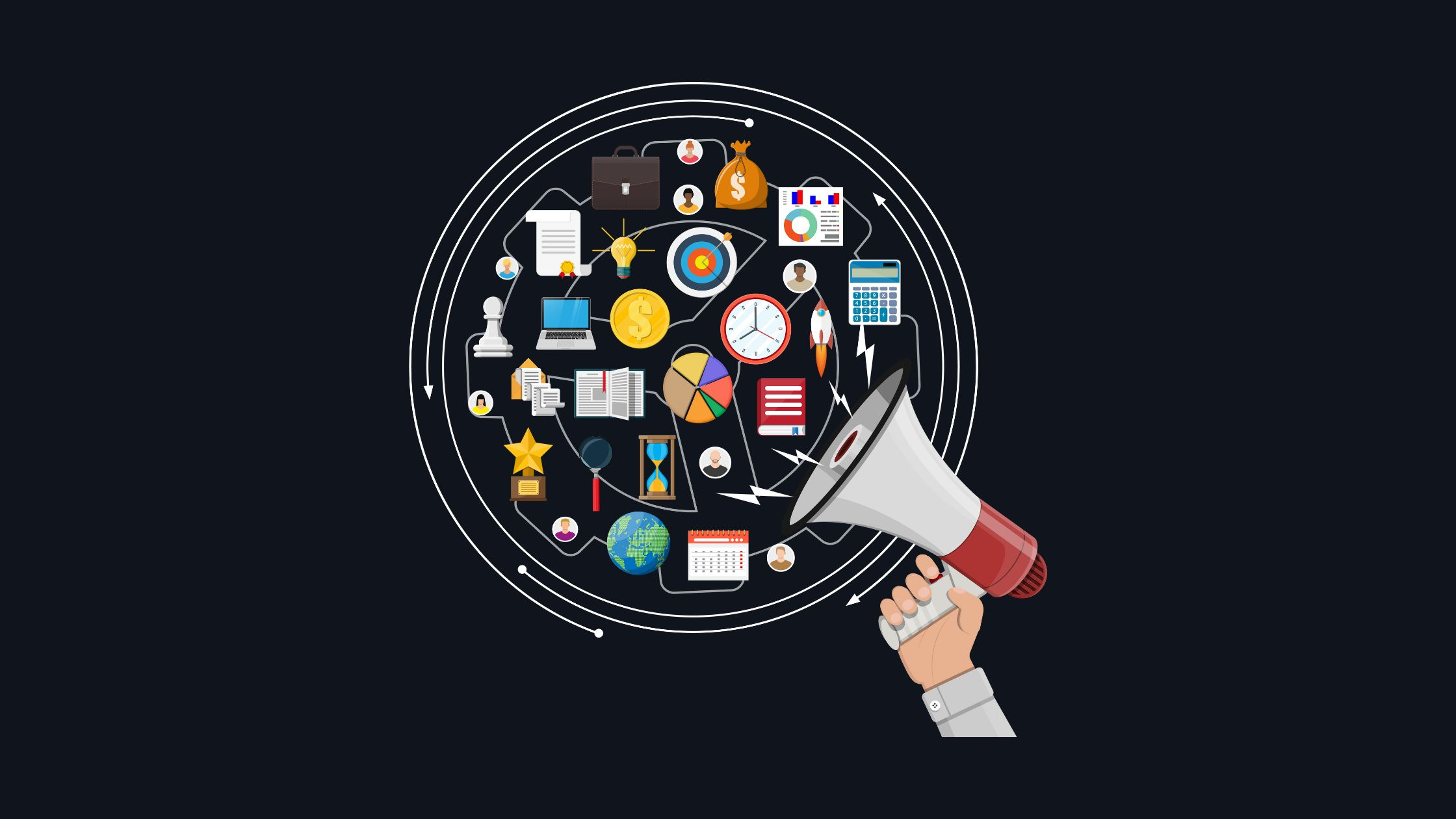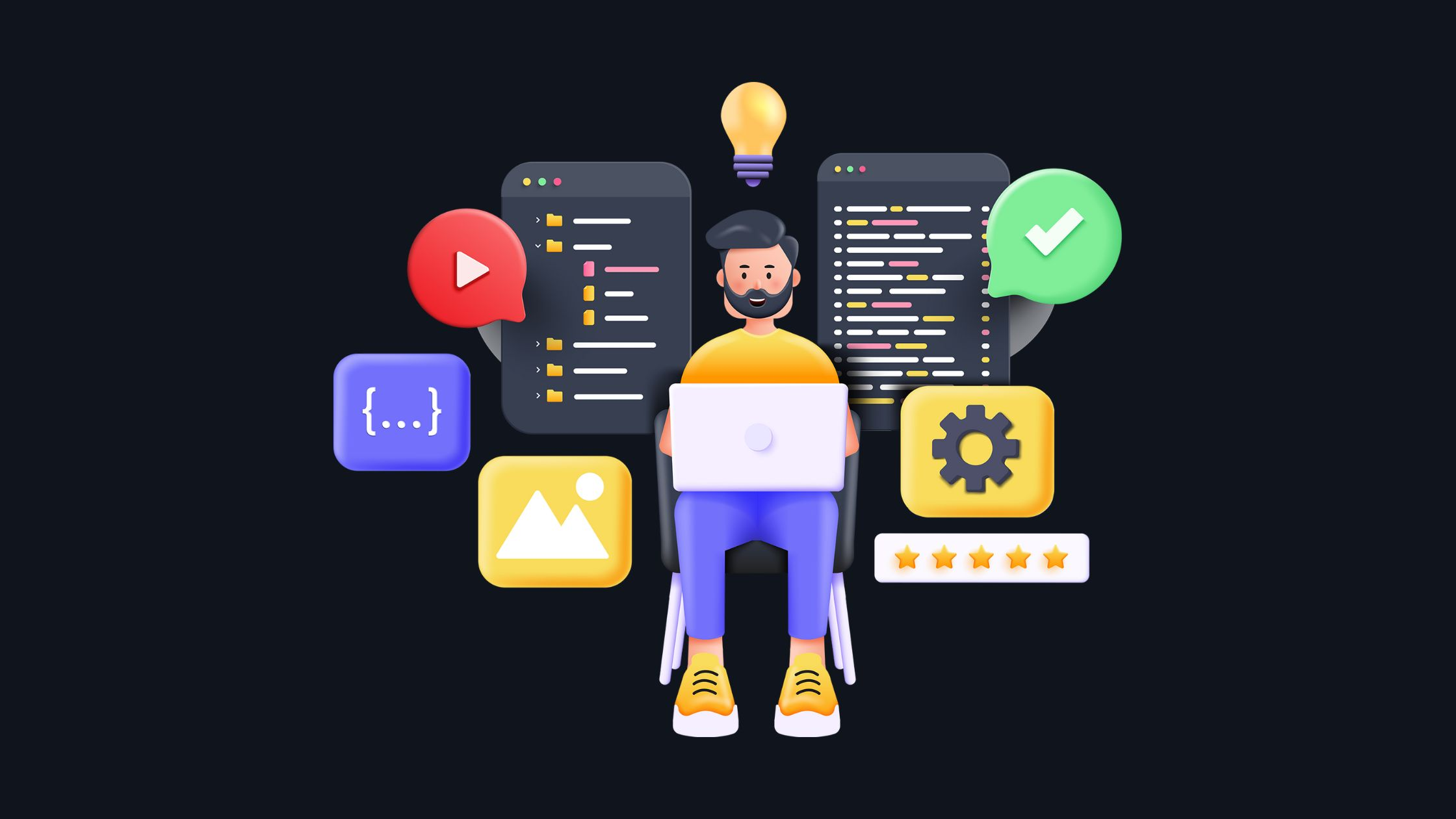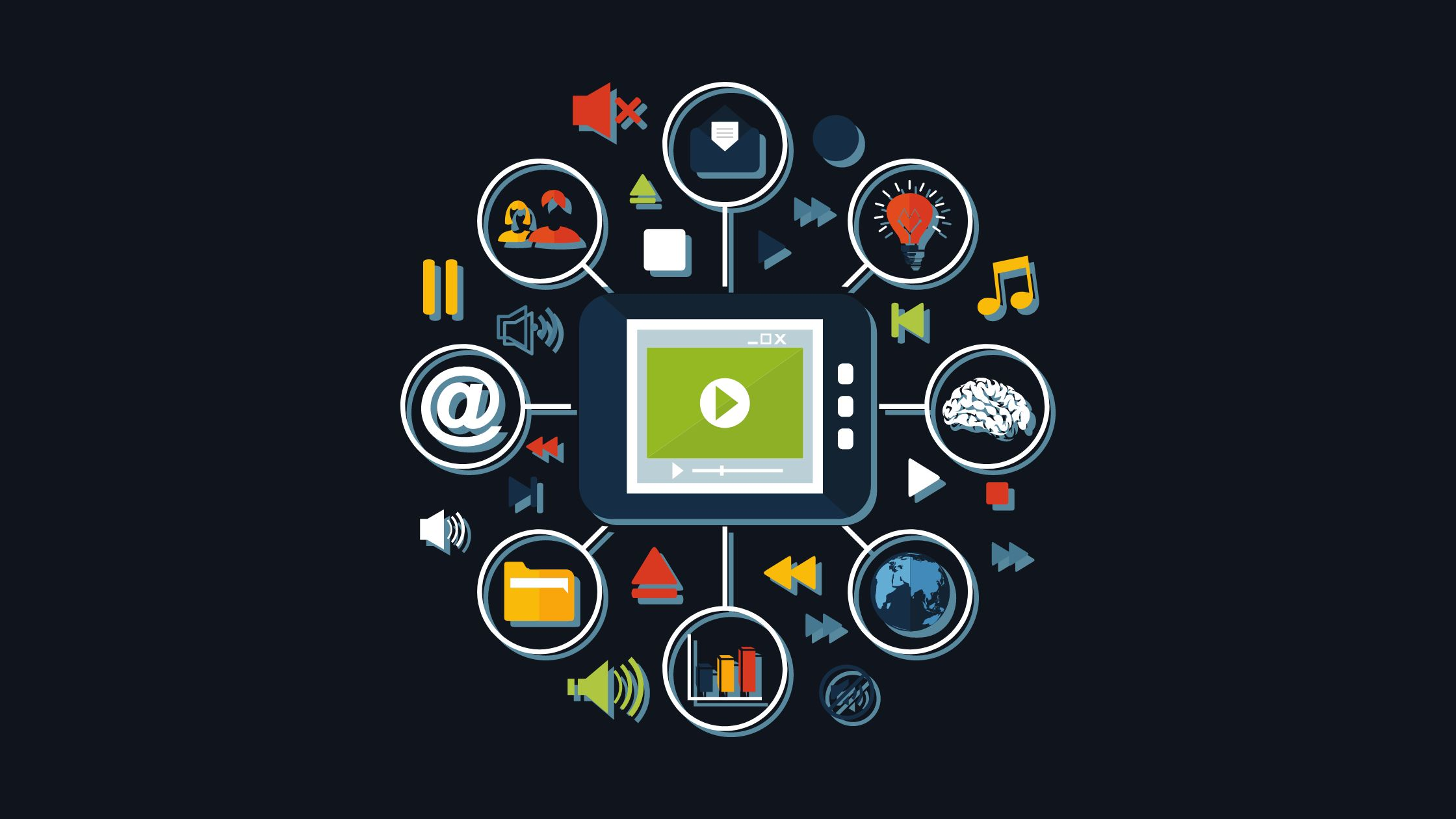Digital Media Buying 101: Get Started With Online Ad Buying

Table of Contents
Marketing is an ever-evolving discipline. In the last decade, digital media marketing has taken the market by storm.
Digital media buying relies on internet platforms to maximize revenue within an allotted budget. To that end, successful media buying requires expertise and technical knowledge—which many businesses lack.
As a result, nearly 40% of digital media investments—over $3 billion in total—generate little to no return on investment.
Use this guide to digital media buying 101 to get started with online ad campaign buying strategies and maximize your gains.
What Is Digital Media Buying?
Digital media buying refers to purchasing advertisements on digital, demand-side platforms. It is a preferred digital advertising strategy for its ability to selectively choose a target audience and thus minimize inefficient expenditures.
Typically, digital media planners & buyers operate on social media platforms, search engines, and internet sites like Facebook, Google, and Instagram.
Media buying often occurs in one of two ways:
Direct buying: A strategy in which marketing teams and individuals cultivate working relationships with third-party publishers or ad managers.
Programmatic buying: Buyers use automated technology to purchase ad placements.
Digital media buying encompasses three primary components:
Demand-side platforms, where advertisers establish campaigns, run advertisements, and evaluate performance.
Supply-side platforms, where publishers sell ad space.
Ad exchange, where advertisers and publishers use real-time bidding to buy or sell ads.
Who Is a Digital Media Buyer?
Digital media buying can refer to a profession or a marketing task. Some buyers are specialists within their fields, while others are entrepreneurs managing all aspects of their businesses.
The digital media buying process entails purchasing ad space on select platforms within a designated budget.
Their objective is to achieve a specific result at the lowest cost. The goals of ad buying include:
Driving traffic to websites, social media accounts, or content
Obtaining leads on potential customers
Driving revenue by promoting select products or services
Increase brand awareness by expanding audiences and increasing brand visibility.
To achieve their objectives, digital media buyers typically:
Align campaigns with corporate goals
Strategically evaluate publishers and purchase ad space
Evaluate relevant metrics to adjust campaign strategies
Define and measure relevant media key performance indicators (KPIs) like ROI, on-site conversions, web traffic, and cost and click performance.
Oversee ad sales and execution
Maintain and manage budgets
How Does Digital Media Buying Work?
Digital media buying represents a mutually beneficial agreement between advertisers, marketing professionals, and publishers.
Buyers select platforms, negotiate with publishers, and strategically purchase ad placements.
It is a cyclical process: as buyers evaluate performance, they shift gears on select campaigns.
Digital media buying relies heavily on data and performance metrics.
The fundamental objective of paid media strategy is to minimize cost and maximize ROI. To do so, these marketing professionals spend significant time evaluating differing KPIs.
The metrics that digital media buyers consider include the following:
Frequency: How often a given user views a program or advertisement over a select period
Impressions: The number of users who view a promotion or campaign or the number of times an ad delivers online.
Net Reach: The total number of users an ad caters to.
Click Through Rate (CTR): The rate at which an advertisement drives traffic.
Cost Per Click (CPC): The cost a buyer spends per click on an ad.
Return On Ad Spend: Revenue generated per dollar spent on advertising.
What Is Programmatic Advertising, and How Does It Work?
Traditional media buying is time-consuming and often inefficient.
Many marketing teams thus use programmatic advertising.
Programmatic advertising refers to using automated processes to purchase ad placements. It allows buyers to skip lengthy negotiations and proposal consideration and manage their advertisements more efficiently.
Programmatic advertising typically occurs in one of three ways:
Real-Time Bidding (RTB): RTB is a bidding structure whereby publishers and buyers engage in live auctions over ad spaces. RTB is highly cost-effective and allows buyers to reach many users.
Private Marketplace (PMP): Private marketplaces enable advertising transactions between select participants and are more restrictive than RTBs.
Programmatic Direct is a direct transaction in which publishers sell media inventory at a fixed price.
Pricing Models: CPM vs.CPC
There are two main pricing models:
Cost-per-mille (CPM) — or cost-per-thousand— pricing structures rely on the number of impressions an ad solicits.
CPM typically refers to the price of 1,000 advertisement impressions on a given ad. For example, a $1.00 CPM means buyers will pay $1 per 1,000 impressions.
CPM is more common in social media ads and display platforms, which rely primarily on user interest and engagement.
Cost-per-click (CPC) — or pay-per-click (PPC) — payment structures allow publishers to charge buyers each time a user clicks on an advertisement.
PPC ads are more common in search engine marketing, where users actively seek and visit websites.
Media Planning vs. Media Buying
Although media planning and buying may sound like similar processes, they entail fundamentally different tasks and responsibilities.
Media planners typically build campaigns, develop marketing strategies, and determine the content of the advertisements.
Media buyers then adapt campaigns to fit the brand, and budget, and select the platform, monitoring key metrics and performance indicators to adjust accordingly.
Media planning and buying are full-time jobs, but one person may assume both in a small or medium-sized business.
Digital Media Buying Strategy & Process
Digital media buying and planning is a fundamentally strategic and data-driven task. Developing media buying strategies requires time and practice.
Every step of the process relies heavily on data and KPIs, and buyers engage in a constant cycle of adjustment and adaptivity.
Use the following steps to develop and streamline your digital media buying strategy for the best results.
Choose and Define Your Goal
Before launching a digital campaign, you must determine your goal.
Begin by identifying your audience and visualizing each step of the engagement process: what exactly do you want your customers to think, feel, and do as they view your advertisement?
Digital media buyers typically start with one or more of the following objectives.
Brand Awareness Goals
One of the primary goals of digital media buying is expanding and developing brand awareness.
Brand awareness is a broad term that refers to the degree to which consumers know, trust, and are loyal to a select brand. Ultimately, brand awareness determines how likely customers are to recognize your brand—and its products.
Buyers use several metrics to assess brand awareness, including impressions, clicks, CPM, CTR, etc.
Brand Awareness and Reach
According to research, brand awareness influences nearly 70% of digital transactions.
Awareness typically refers to the likelihood that a user will recognize a brand, though it may also refer to customer loyalty.
Marketing teams often develop brand awareness by conducting social and organic searches, soliciting media mentions, offering promotions, and more.
Advertisements that aim to develop brand awareness often focus on a brand’s emotional connection, value, community connection, or credibility.
Search volume data, web traffic, and social listening (tracking keywords and hashtags) can help clarify brand awareness.
Video Views
Video views are one significant measure of brand awareness — particularly for performance marketing campaigns.
Media platforms like Youtube and TikTok have built-in video view metrics, but buyers sometimes invest in third-party software to track views.
Traffic/Website Visitors
Performance marketing campaigns operate to drive traffic. The more website traffic you have, the more likely you are to generate leads.
You can trace several types of traffic—organic traffic, referral traffic, etc.—and these metrics are often readily available from web hosts or third-party software.
Conversion/Customer Acquisition & Retention Goals
Buyers create conversion goals to drive leads or sales. Digital media marketing typically focuses on conversion goals.
There are several ways to measure conversion goals, including conversions, cost per conversion, conversion rate, and return on ad spend (ROAS).
Lead Generation
Lead generation refers to identifying potential customers and piquing their interest in your product or services. This typically entails using a funnel or pipeline to build your potential client’s potential investment in your brand.
Key lead generation metrics include cost per acquisition (CPA), average revenue per customer (ARPC), CTR, and more.
Online Sales & Customer Acquisition
Customer acquisition refers to converting a potential client into a revenue-producing customer.
You can easily track sales by measuring revenue, customer acquisition cost (CAC), average order (transaction value), and return on investment (ROAS).
Upsells & Customer Retention
Upselling is a sales strategy that drives acquired customers to purchase additional (typically higher-value) products or services.
Customer retention is the likelihood that customers will continue to buy from you.
To track upsells and retention, you can measure upsell conversion, customer retention, current customer growth rates, product return, customer/revenue churn, and more.
Strategize KPIs
The second step to any successful digital media buying strategy is determining the key performance metrics (KPIs) that you will use.
Your KPIs will depend mainly on the campaign goal you have selected. For example, if you wish to boost upsells, you should expect to pay attention to your upsell conversion rates. If you track performance, look for traffic indicators and return on investment (ROI).
Use more than one metric to develop a clearer picture of your performance. The more specific your KPIs are, the more successful you will be.
Consider the following common KPIs.
ROI: ROI is a popular metric for its simplicity. ROI measures your revenue according to ad spending and will allow you to strategize and modify your ad campaigns.
CTR: CTR refers to the success of an advertisement in leading clients back to a specific website or page.
CPC: The cost you incur per user click.
CPA: Cost per acquisition allows you to determine how much each investment costs.
Views: Measure page, website, or video views to assess performance.
Leads/ CPL: Assess your leads and cost per lead to determine engagement.
Brand Recall: Measure upsell, retention, and awareness metrics to determine your customers’ brand loyalty.
Do Your Market Research
Researching competitors is one of the essential elements of any successful marketing campaign. Without a firm understanding of what your competitors are doing, your efforts amount to a shot in the dark.
What Kinds of Ads Are Competitors Running?
Are your competitors running video ads or banner ads? Are they promoting brand awareness or driving conversions?
Examine your competitors’ campaigns to gain a clearer picture of what is and isn’t already working. In doing so, you can minimize inefficiency.
What Kinds of Offers Are Competitors Promoting?
Determine the products, services, and rates that your competitors are offering and assess the success rate of their offers. This will allow you to price and place accordingly.
What Are Their Visuals Like?
Assessing your competitors’ visuals will allow you to distinguish your brand from others better, increasing brand awareness. Furthermore, you can determine which types of visuals (colors, images, videos, emotional content, etc.) your potential customers respond to most.
What Is the Average CPM and CPC in Your Industry, Market, or Geographic Area?
Identifying existing digital media rates will empower you to budget realistically, minimizing marketing inefficiencies.
To get a precise cost picture, ensure you research your industry, market, and geographic area.
Prepare Your Media Plan and Creative Strategy, and Set Your Budget
Although it’s essential to plan, be prepared to shift gears depending on your performance.
At this point in the process, you will establish a robust plan and strategy to guide your campaign. Additionally, set a reasonable budget based on your research findings.
Decide on a Budget
Your budget is the amount you intend to spend on your campaign. Consider your campaign goals and market research and determine how much your campaign will cost you based on current advertising costs.
Your budget should align with your goals, target market, and locale.
Create Campaigns and Develop Strategies
Determine the offer you wish to promote: what do you intend to provide to consumers? At what price? Consider all aspects of the transaction throughout this process.
Develop marketing copy and visuals according to your campaign goals. Ensure your copy is professional, direct, and free of errors.
Choose your visuals according to the message you wish to convey and digital media performance metrics.
Choose the Right DSP Platform
Your demand-side platform is the automated software that will allow you to purchase ad space.
Choosing the right platform will determine how much attention and engagement your ads will generate.
Start with the platform you are most familiar with, which will enable you to track KPIs better.
If you intend to spend under $5,000 on your campaign, focus on one platform to maximize your ROI. If you can pay over that, consider advertising across several high-traffic platforms.
Decide on a Campaign Type
If you haven’t already, decide on your campaign type. Build your campaign type around one of the following events:
Objectives: Determine your purpose. Are you seeking to boost views/traffic or drive conversions?
Conversion events: These are actions that entail conversion—like cart completions, website purchases, or form submissions.
Single image vs. dynamic: Determine whether you will use a single image for your ad or a set of different pictures. This allows you to determine performance.
Bidding Options: Your campaign type may depend on your budget. Determine your bidding options to choose an appropriate strategy.
Schedule: Your campaign schedule determines when and how long your ads will run.
Decide on Audiences
To run a successful campaign, you must have a clear vision of your intended audience.
Choose your audience based on the following considerations.
Broad: A broad audience refers to a more general group of people. Wider audiences tend to run cheaper, while specified audiences can be more expensive.
Lookalike: Selecting a lookalike audience allows you to reach new customers likely to show interest in your offer.
Customer list: You may wish to reach your existing customers using a current list.
Email list: Targeting your email list is an excellent way to generate conversions since you know your subscribers are likely already interested in your brand.
Keywords: A keyword analysis can help determine who might be looking for an offer like yours.
Decide on Budget Allocation.
Before you launch your campaign, determine how much you will spend on each sub-campaign, ad set, or individual ad.
To evaluate your ad spend, identify existing costs (CPC, CPL, CPA, etc.) and determine how many other advertisers are allocating to different sets and sub-campaigns.
You can adjust your budget according to performance.
Set Up the Ads, Publish, and Monitor Results
Most platforms make it easy to create and publish your ads. Create several variations of your ads to assess performance better and discover profitable strategies.
Then, publish and consistently monitor each ad to determine which variation generates the best results. Use your KPIs to monitor your initial progress.
Evaluate Campaign Performance
Evaluation is the key to successful campaigns. Consistently evaluate your campaigns based on your goals and the metrics you established.
If possible, isolate different features of your campaign to clarify what works and what doesn’t.
Evaluate Overall Performance and Look Ahead
Your final evaluation will identify the most cost-efficient and effective strategies and campaign elements.
A comprehensive analysis lets you strategically plan for future campaigns and marketing strategies.
Remember that digital media buying is an iterative process—you will constantly improve with each marketing cycle.
FAQ
Consider our most frequently asked questions for more information on successful digital media buying.
Why is media buying important for brands?
Media buying—and digital media buying, particularly—increases brand awareness by boosting visibility and driving conversions. Data-driven digital marketing is more cost-efficient and has a broader reach.
What is the difference between media planning and buying?
Media planning entails planning and designing campaigns. Media buying refers to the process of purchasing and managing ad space.
What are the types of media buying?
The two types of media buying are direct buying and programmatic buying.
What is direct media buying?
Direct media buying occurs when advertisers negotiate directly with publishers to place ads.
What is programmatic media buying?
Programmatic media buying is an automated process of buying ad space directly from platforms.
What is a digital media buyer?
A digital media buyer is an advertiser who strategically places, manages, and evaluates ads on digital platforms.
What does a digital media buyer do?
Digital media buyers set objectives, direct campaigns, manage budgets, negotiate with platforms, place bids, manage and optimize ads, and assess campaign performance.
Wrapping Up
Ultimately, successful digital media buying is a process of trial and error. Be prepared to remain flexible and adaptive, and persist despite setbacks.
The objective is to improve and launch more successful campaigns every time.
Use this guide to digital media buying 101 to consistently improve your media buying strategies and obtain the results you want.
Share

About
Walter Voronovic shares accurate, honest & pragmatic information on how to use the internet to build profitable digital business assets.
Share
Categories
Digital Marketing
Digital Marketing Guides & How To’s SEO Guides & How To’s Ad Tracking & Attribution – Increase ROAS With Accurate Reports Graphic Design Business Ideas
7 Best Sales Funnel Builders In 2023: Reliable & Cheap
7 Best Sales Funnel Builders In 2023: Reliable & Cheap Table of Contents Using a sales funnel is an effective way to strategically acquire leads,
Best Ad Tracking Software: Affordable, Premium & Best (2023)
Best Ad Tracking Software: Affordable, Premium & Best (2023) Table of Contents Businesses utilize ads to reach & acquire new customers. However, keeping track of




